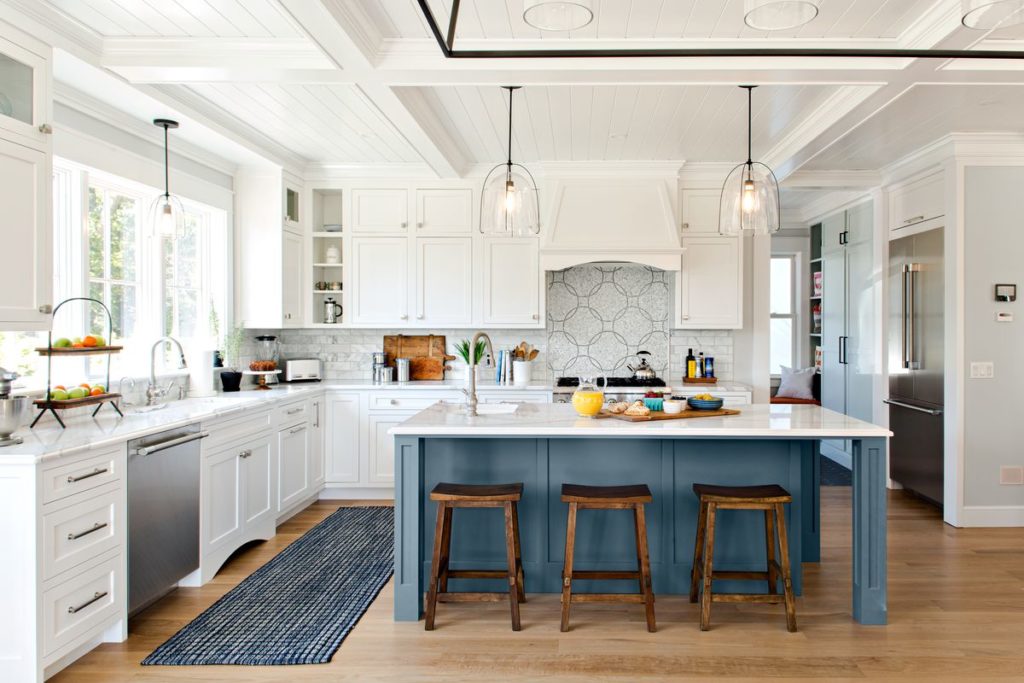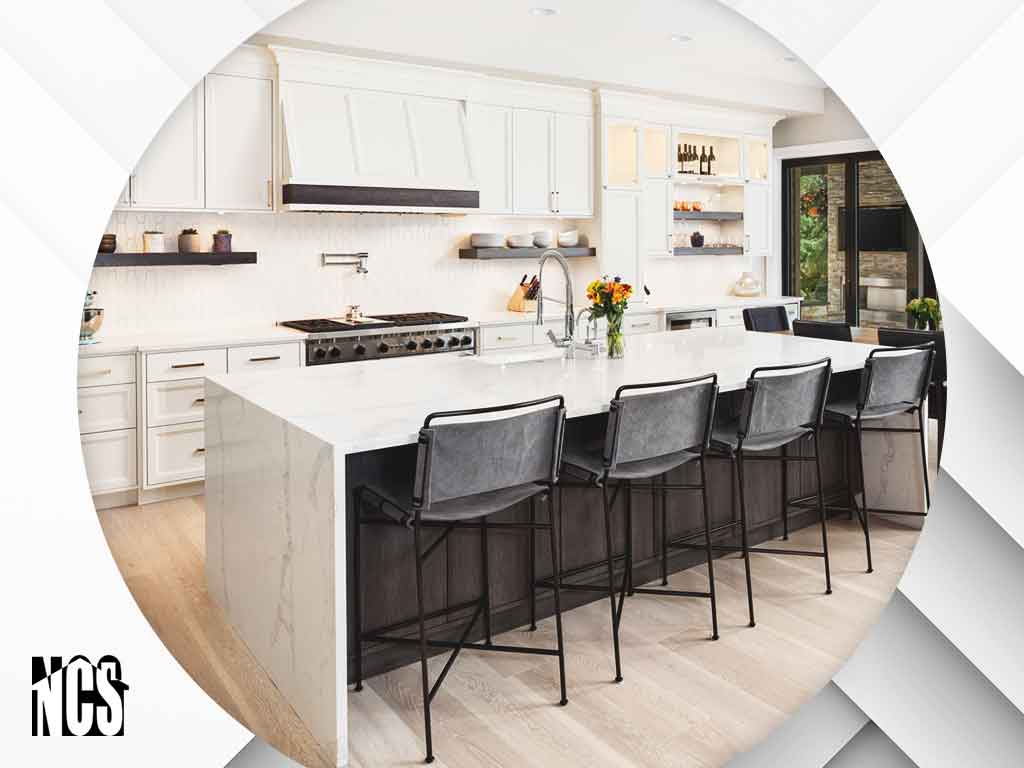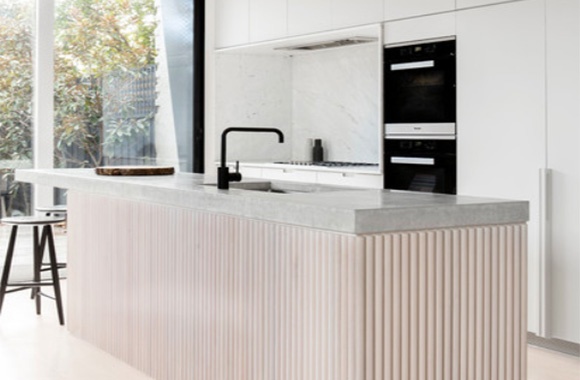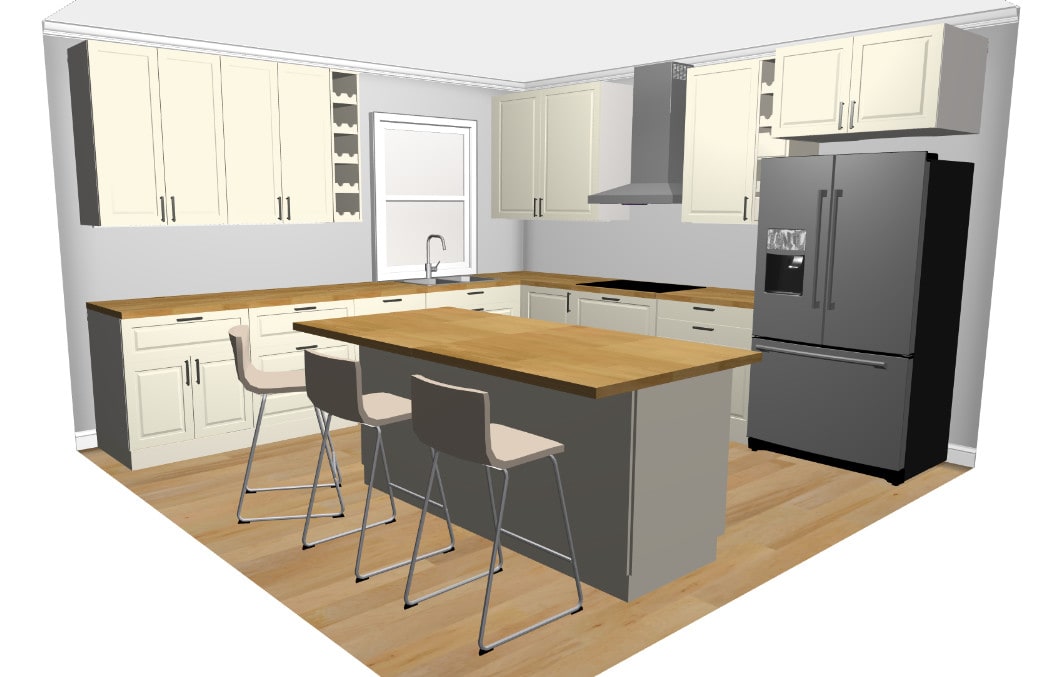When it comes to designing a functional and stylish kitchen, one of the essential elements to consider is the kitchen island. This versatile feature not only adds extra counter space and storage to your kitchen but also serves as a gathering place for family and friends. However, to ensure that your kitchen island is both functional and aesthetically pleasing, it's crucial to get the measurements right. In this article, we'll discuss the top 10 main kitchen island design measurements to consider when creating your dream kitchen.Standard Kitchen Island Dimensions with Seating
The first step in designing a kitchen island is determining the appropriate size. The size of your kitchen island will depend on various factors, including the size of your kitchen, your lifestyle, and your budget. However, there are some general guidelines to follow when it comes to kitchen island dimensions with seating. A standard kitchen island should be at least 4 feet long and 2 feet deep, with a recommended height of 3 feet. This size allows for enough space for both cooking and seating.Kitchen Island Size Guidelines
Determining the right size for your kitchen island can seem like a daunting task, but there are a few key measurements to keep in mind. First, measure the length and width of your kitchen to determine how much space you have to work with. Next, consider how many people you want to seat at your kitchen island. A good rule of thumb is to allow 24 inches of counter space per person for comfortable seating. Finally, consider the function of your kitchen island. Will it primarily be used for food prep or as a gathering place? This will also impact the size and design of your island.How to Determine Kitchen Island Size
There are endless possibilities when it comes to kitchen island designs, and the dimensions will vary depending on the style and layout. For example, a single-level island will typically be shorter in height compared to a multi-level island. Similarly, a rectangular island will require different dimensions than a curved one. It's essential to consider your specific needs and preferences when determining the dimensions and design of your kitchen island.Kitchen Island Dimensions and Designs
Before you start designing your kitchen island, it's crucial to take accurate measurements of your space. To do this, you'll need a tape measure, pencil, and graph paper. Start by measuring the length and width of your kitchen, including any obstacles such as appliances or cabinets. Next, measure the space where you plan to install your kitchen island, taking into account the recommended clearance space of at least 36 inches on all sides. Finally, transfer these measurements onto your graph paper to create a scaled drawing of your kitchen.Measuring for a Kitchen Island
Spacing is an essential factor to consider when designing a kitchen island. You want to ensure that there is enough space around your island for easy movement and functionality. As mentioned earlier, a clearance space of at least 36 inches is recommended on all sides of the island. However, if you have a larger kitchen, you may be able to increase this clearance space to 42 inches for a more spacious feel. Additionally, make sure to leave enough space for cabinet and appliance doors to open without obstruction.Kitchen Island Size and Spacing
Proper measurements are essential when designing a kitchen island, but they are just one piece of the puzzle. The overall design and layout of your island are equally essential for a functional and visually appealing space. Consider incorporating features such as a sink, stove, or wine rack into your island's design, depending on your needs and preferences. These elements will impact the dimensions and placement of your island, so make sure to carefully consider the design before finalizing the measurements.Designing a Kitchen Island with Proper Measurements
Whether you have a small or large kitchen, you can still incorporate a kitchen island into your design. For smaller spaces, a compact island with a single level and limited seating may be the best option. On the other hand, for larger spaces, you can get creative with your island's dimensions and design, incorporating multiple levels and more seating. Just be sure to consider the clearance space and functionality when designing your kitchen island for any size space.Kitchen Island Dimensions for Small and Large Spaces
When it comes down to it, there are a few key measurements that you must consider when designing a kitchen island. These include the length, width, and height of the island, as well as the recommended clearance space of at least 36 inches on all sides. Additionally, consider the size of your kitchen, the number of people you want to seat at your island, and the island's overall design and layout. By carefully considering these measurements, you can create a functional and stylish kitchen island that fits perfectly into your space.Key Measurements for Designing a Kitchen Island
In conclusion, a kitchen island is an excellent addition to any kitchen, providing extra counter space, storage, and a gathering place for family and friends. When designing your kitchen island, make sure to take accurate measurements, consider the recommended guidelines for size and spacing, and incorporate your own personal style and needs. With the right measurements and design, you can create a functional and stylish kitchen island that enhances the overall look and functionality of your kitchen.Standard Kitchen Island Dimensions for Functional and Stylish Designs
Why Kitchen Island Design Measurements are Essential for a Functional and Stylish Kitchen
The Rise of Kitchen Islands
 In recent years, kitchen islands have become a staple in modern kitchen design. These versatile and functional additions provide extra counter space, storage, and seating to the heart of the home. With the rise in popularity of open-concept living, kitchen islands have also become a way to seamlessly connect the kitchen to the rest of the living space. However, with so many options available, it can be overwhelming to choose the right size and design for your kitchen. This is where
kitchen island design measurements
come into play.
In recent years, kitchen islands have become a staple in modern kitchen design. These versatile and functional additions provide extra counter space, storage, and seating to the heart of the home. With the rise in popularity of open-concept living, kitchen islands have also become a way to seamlessly connect the kitchen to the rest of the living space. However, with so many options available, it can be overwhelming to choose the right size and design for your kitchen. This is where
kitchen island design measurements
come into play.
The Importance of Proper Measurements
 When it comes to kitchen islands, one size does not fit all.
Kitchen island design measurements
are crucial in ensuring that the island fits seamlessly into your kitchen, both in terms of functionality and aesthetics. A poorly sized island can make the kitchen feel cramped and hinder the flow of traffic, while an oversized island can dominate the space and make it difficult to maneuver around. By taking accurate measurements, you can create a well-proportioned island that enhances the overall design of your kitchen.
When it comes to kitchen islands, one size does not fit all.
Kitchen island design measurements
are crucial in ensuring that the island fits seamlessly into your kitchen, both in terms of functionality and aesthetics. A poorly sized island can make the kitchen feel cramped and hinder the flow of traffic, while an oversized island can dominate the space and make it difficult to maneuver around. By taking accurate measurements, you can create a well-proportioned island that enhances the overall design of your kitchen.
Factors to Consider
 There are several factors to consider when determining the
kitchen island design measurements
for your space. First, you need to consider the size of your kitchen and the available space for the island. It's essential to leave enough room for comfortable movement around the island, as well as clearance for cabinet doors and appliances. The shape of your kitchen also plays a role in determining the size and shape of your island. For example, a rectangular island may work well in a long and narrow kitchen, while a square or circular island can be a better fit for a square-shaped kitchen.
There are several factors to consider when determining the
kitchen island design measurements
for your space. First, you need to consider the size of your kitchen and the available space for the island. It's essential to leave enough room for comfortable movement around the island, as well as clearance for cabinet doors and appliances. The shape of your kitchen also plays a role in determining the size and shape of your island. For example, a rectangular island may work well in a long and narrow kitchen, while a square or circular island can be a better fit for a square-shaped kitchen.
Functional and Stylish Design
 Aside from the practical considerations of size and space,
kitchen island design measurements
also play a crucial role in creating a functional and stylish design. The height of the island should be in proportion to the rest of your kitchen, and it's essential to leave enough legroom for seated guests. The depth of the island should also be carefully considered, as it affects both the storage capacity and the functionality of the workspace. Additionally, the design of the island, such as the placement of appliances and the use of materials, can greatly impact the overall look of your kitchen.
In conclusion,
kitchen island design measurements
are a fundamental aspect of creating a functional and stylish kitchen. By taking accurate measurements and considering the various factors, you can ensure that your island fits seamlessly into your space and enhances the overall design of your kitchen. Don't be afraid to get creative and think outside the box when it comes to
kitchen island design
. With the right measurements and design, your kitchen island can become the focal point of your home.
Aside from the practical considerations of size and space,
kitchen island design measurements
also play a crucial role in creating a functional and stylish design. The height of the island should be in proportion to the rest of your kitchen, and it's essential to leave enough legroom for seated guests. The depth of the island should also be carefully considered, as it affects both the storage capacity and the functionality of the workspace. Additionally, the design of the island, such as the placement of appliances and the use of materials, can greatly impact the overall look of your kitchen.
In conclusion,
kitchen island design measurements
are a fundamental aspect of creating a functional and stylish kitchen. By taking accurate measurements and considering the various factors, you can ensure that your island fits seamlessly into your space and enhances the overall design of your kitchen. Don't be afraid to get creative and think outside the box when it comes to
kitchen island design
. With the right measurements and design, your kitchen island can become the focal point of your home.











































:max_bytes(150000):strip_icc()/kitchenworkaisleillu_color3-4add728abe78408697d31b46da3c0bea.jpg)





:max_bytes(150000):strip_icc()/distanceinkitchworkareasilllu_color8-216dc0ce5b484e35a3641fcca29c9a77.jpg)




































